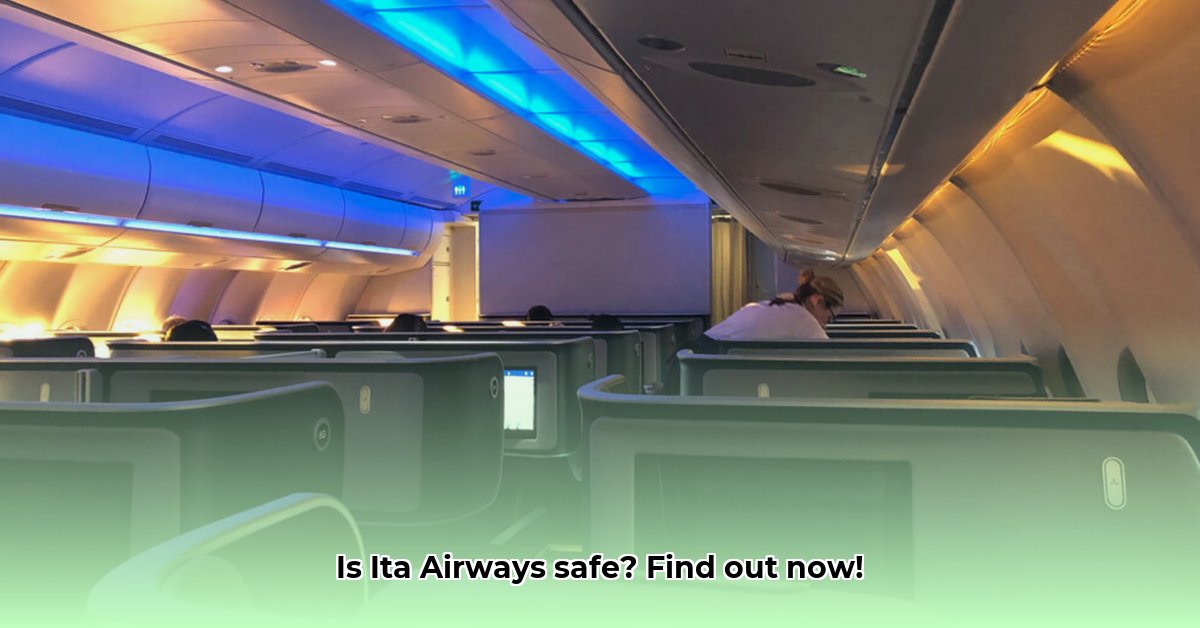
Understanding Airline Safety: A Multifaceted Approach
Choosing an airline involves considering various factors beyond simple star ratings. Airline safety encompasses several key areas: incident rates (both major and minor occurrences), fleet age (newer planes generally incorporate advanced safety technology), pilot training programs (rigorous training is essential for handling unexpected situations), maintenance schedules (regular and thorough maintenance is vital), and operational procedures (efficient management of operations minimizes risks). While organizations like AirlineRatings.com provide valuable summaries, these ratings offer a broad overview rather than a definitive assessment. They provide a useful starting point but require further investigation to fully understand an airline’s safety commitment. Is a high rating sufficient? What about the smaller intricacies of safety protocols that are not always publicly available?
Ita Airways' Safety Performance: A Data-Driven Review
Determining Ita Airways' precise safety ranking requires consulting several authoritative sources. AirlineRatings.com and similar organizations collect and publish data; however, their specific ranking of Ita Airways may vary over time. These rankings should be viewed as general indicators rather than absolute statements. It's crucial to remember no airline is flawless, even those with the best safety records may experience minor incidents. The focus should be on the airline's consistent effort to enhance safety and its overall safety record. What are the key metrics influencing these ratings, and how does Ita Airways compare on these indicators?
Comparative Analysis: Ita Airways within the European Landscape
Placing Ita Airways within the broader context of European airlines requires a comparative analysis of its peers. Factors contributing to such a comparison include fleet age (newer fleets generally signify more advanced safety features), maintenance practices (regular and rigorous inspections are paramount), pilot training standards (extensive and frequent training is vital), and operational safety records (a consistent record of safe operations is reassuring). How do these factors, when compared, influence the overall perception of Ita Airways' relative safety among its competitors?
Factors Influencing Airline Safety: Beyond the Numbers
Several critical elements affect airline safety, extending beyond the metrics used in ranking systems. These include:
- Pilot Training: The intensity and frequency of pilot training programs significantly influence safety. Regular refresher courses and advanced training on the latest safety protocols are essential.
- Maintenance Practices: Rigorous and frequent aircraft inspections and maintenance significantly reduce the risk of mechanical failures. The quality and experience of maintenance technicians is critical.
- Safety Management Systems (SMS): Proactive use of data analysis to identify potential safety hazards and implement improvements is crucial for continuous improvement.
- Operational Procedures: Clear, well-defined procedures for handling emergencies and unforeseen events are essential for mitigating risks.
Actionable Advice for Passengers: Making Informed Decisions
To ensure a safer flight experience, potential passengers can take the following proactive steps:
- Conduct Thorough Research: Consult reputable resources like AirlineRatings.com for comparative ratings and reviews. Remember, however, that these ratings provide a snapshot and not a complete picture.
- Ask Targeted Questions: Before booking, inquire about the airline's safety history, maintenance protocols, and emergency procedures directly with the airline or travel agent.
- Assess Key Features: Favor airlines with newer fleets, positive safety audit results, and a demonstrated commitment to ongoing safety enhancements. What are the specific criteria that demonstrate such a commitment?
- Consider Travel Insurance: Purchasing travel insurance can provide financial protection against unexpected events.
Conclusion: Prioritizing Safety in Air Travel
Publicly available safety data offers valuable insights, but it is important to note that it does not capture all aspects of an airline's safety culture and practices. Airline safety is a dynamic area; continuous research and a critical evaluation of available data are essential for informed decision-making. While this analysis aims to provide a comprehensive overview, the ultimate decision lies with the individual traveler. What further steps can you take to maximize your safety during your travels?
Disclaimer: Limitations of Publicly Available Data
This analysis relies on publicly available safety data, and it is important to acknowledge the limitations inherent in using such data. Safety standards and practices are constantly evolving, and publicly available information might not always reflect the complete picture of an airline's safety protocols or performance. This article should serve as a resource for making informed decisions but should not be considered a definitive guarantee of safety.